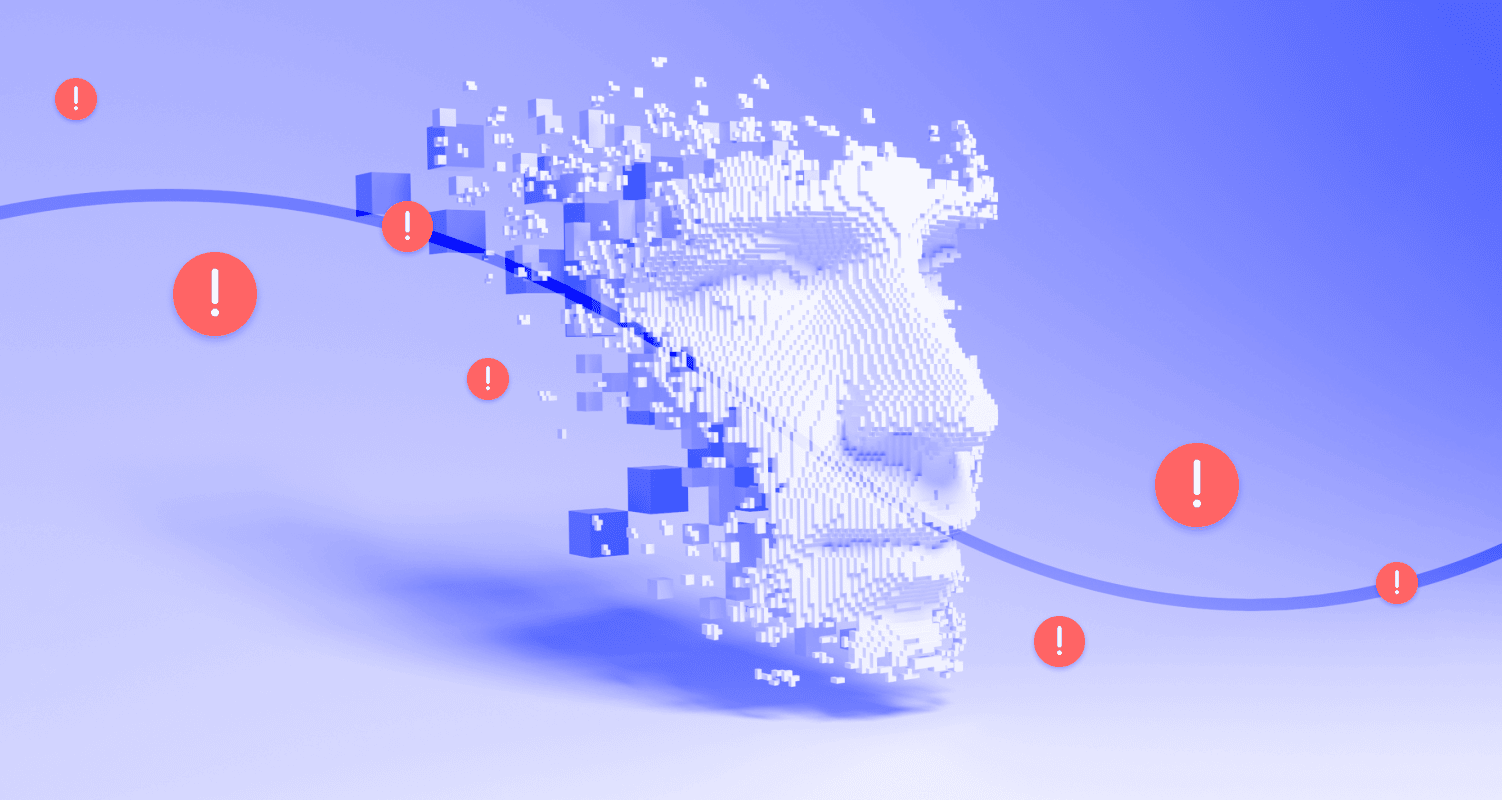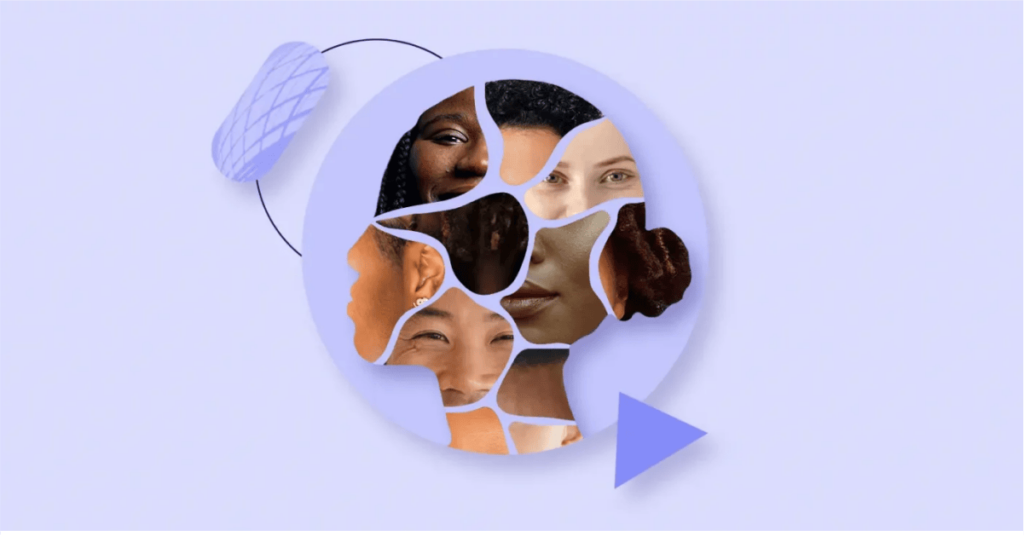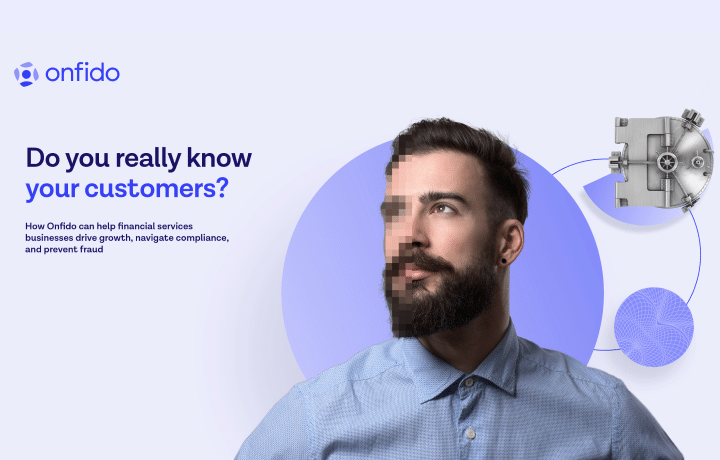
The growing threat of deepfakes means businesses need actionable insights on how to protect themselves and implement sophisticated fraud prevention solutions. In this article, we will delve into what deepfakes are, how they can be detected, and offer examples that illustrate the potential risks. The recent viral deepfake video of financial influencer Martin Lewis is one example of this growing problem.
What are deepfakes?
Deepfakes refer to manipulated or synthesized media, typically using artificial intelligence (AI) and machine learning (ML) algorithms, to create convincing fake content. These sophisticated techniques enable cybercriminals to superimpose one person's face onto another's body or alter their facial expressions, voice, or gestures. The result is highly realistic, fabricated content that can be difficult to distinguish from genuine recordings or images.
Deepfakes pose a serious threat to businesses and individuals alike. Fraudsters can use this technology to perpetrate scams, misrepresent brands, damage reputations, or manipulate sensitive information. As identity verification experts, we’ve been carefully tracking developments in deepfake technology. Our document and biometric verification solutions enable over 900 businesses to remotely verify their customers' identities, and we’re always building new technologies to detect deepfakes and other sophisticated spoofing techniques.
To combat this menace, businesses need effective methods to identify and mitigate the risks associated with deepfakes.
What are deepfake videos?
Deepfake videos are a type of manipulated media that utilize artificial intelligence and machine learning techniques to create highly realistic, fabricated content. These videos can be pre-recorded or generated in real-time with a GPU and fake webcam, and typically involve the substitution or superimposition of one person's face onto another person's body, allowing for the creation of highly convincing fake footage.
Deepfake videos are created by training deep learning models on large datasets of images and videos of the target individual whose face is to be manipulated. These models learn to analyze facial features, expressions, and movements, and then generate new video frames that seamlessly blend the target face onto the source body. The result is a video that appears authentic, with the target person convincingly mimicking the actions and expressions of the original source.
Deepfake videos are rare, as they require technological sophistication, but are on the rise.
The advancements in deepfake technology have raised concerns due to their potential for misuse. Deepfake videos can be used to spread misinformation, deceive viewers, manipulate public opinion, or defame individuals. They have the potential to be employed in various contexts, such as politics, entertainment, social media, and even fraud attempts.
It's important to note that not all manipulated videos are deepfakes. There are other types of manipulated videos, such as cheap fakes or shallowfakes, which involve simpler editing techniques and are typically easier to detect. Deepfakes, however, stand out for their highly realistic and sophisticated nature, making them a more significant challenge to identify and combat.
As deepfake technology continues to evolve, it becomes increasingly important for individuals, businesses, and platforms to implement robust detection methods and tools to combat the potential risks associated with deepfake videos. Proactive measures, such as advanced AI algorithms, biometric verification, and facial analysis, are crucial for detecting and mitigating the harmful effects of deepfake content.
Examples of deepfakes
Impersonating public figures
Deepfakes have been used to create fabricated videos of politicians, celebrities, or business leaders, leading to reputational damage or misinformation campaigns. For example, in Kendrick Lamar’s music video The Heart Part 5, the singer’s face morphs into that of the late Kobe Bryant, a deepfake so convincing that it truly looks like Bryant is performing despite passing away two years previously. Even further back in 2018, BuzzFeedVideo created a convincing deepfake of President Barack Obama, that also mimicked his voice and gestures. This quickly raised ethical concerns among viewers, even though their message was to beware of the disinformation deepfakes could create.
Business fraud
Fraudsters can manipulate audio or video recordings to deceive employees or customers, enabling them to gain unauthorized access to sensitive information or carry out fraudulent transactions. In one case, AI voice cloning technology scammed a bank manager into initiating wire transfers worth $35 million. And an AI hologram was used to impersonate the COO of one of the world’s largest crypto exchanges on Zoom call, scamming another business into losing all their liquid funds.
Identity theft
Deepfakes can be employed to bypass traditional identity verification processes, allowing cybercriminals to impersonate others and access restricted resources or commit financial fraud.
Social engineering attacks
By creating convincing deepfake personas, attackers can manipulate individuals into revealing confidential information or performing actions that compromise their security. In July 2023, financial services influencer Martin Lewis’ likeness was used in a deepfake scam. His face and voice were used in a video that circulated on social media, encouraging people to invest in an app claiming to be related to Tesla and Twitter CEO Elon Musk. Lewis had nothing to do with it, and warned his millions of followers to beware of the scam.
In 2021, a cybercriminal created a deepfake video impersonating a Dubai Crown Prince, Sheikh Hamdan bin Mohammed bin Rashid Al Maktoum, to solicit funds from unsuspecting individuals. These incidents highlight the need for advanced detection methods to combat the misuse of deepfakes for fraudulent activities.
Difference between deepfakes and cheap fakes
In addition to deepfakes, it's important to understand the distinction between deepfakes and cheap fakes. While both involve the alteration or fabrication of media, there are significant differences in their creation and level of sophistication.
Cheap fakes, also known as shallowfakes or low-tech fakes, typically involve simple editing techniques using basic software or tools. They may include subtle modifications like altering captions, cropping or rearranging images, or selectively editing video segments. Compared to deepfakes, cheap fakes are often easier to detect, as they usually lack the level of realism and seamless integration that deepfake technology offers. Research from Onfido’s applied sciences team shows that poor quality cheap fakes has increased significantly from Dec 2022.
Deepfakes, on the other hand, are more complex and sophisticated. They utilize advanced AI and ML algorithms to generate highly realistic content by swapping faces, mimicking facial expressions and movements, or altering voices. Deepfakes can convincingly mimic the appearance and behavior of real individuals, making them harder to distinguish from authentic media.
While both cheap fakes and deepfakes pose risks, the potential consequences and challenges they present differ. Cheap fakes are more commonly associated with misinformation campaigns or the spread of manipulated images or videos on social media platforms. They can be addressed through traditional media literacy efforts, fact-checking, and content verification techniques.
Deepfakes, with their increased level of authenticity and potential for misuse, raise concerns related to identity theft, fraud, and the erosion of trust. Detecting deepfakes requires more sophisticated methods, often involving AI-driven algorithms, biometric verification, and advanced analysis of facial movements and audio characteristics.
By understanding the differences between deepfakes and cheap fakes, businesses can better assess the potential risks they face and adopt appropriate measures to protect their operations, reputation, and customers' trust.
How to spot a deepfake
Deepfakes can be dangerous because they look so convincing, but there are some signs to look for that might help identify if a video is a deepfake.
Look for unnatural eye movements
Because of the way that AI builds the deepfake video, natural eye movements and blinking are hard to recreate perfectly.
Listen for sync between audio and video
You can watch the person in the video’s lips and see if they synch up with the audio, or compare it with an original video of the person talking.
Check for inconsistencies in colors and shadows
You might be able to notice if shadows appear to be in the wrong place, or there are color inconsistencies with the background and the person, especially when they move. Inaccuracies in skin tone can also be another indicator that a video is a deepfake.
Notice unnatural movements
Sometimes body shape or facial expressions can become distorted with movement in deepfake videos.
How to protect your business against deepfakes
The rise of deepfakes necessitates a proactive approach to safeguarding businesses against their malicious use. While the sophistication required for deepfakes makes them rare, they are damaging and can cause huge losses if they get through a business’s systems.
As a leading digital identity verification company, Onfido equips organizations with cutting-edge deepfake detection solutions to mitigate risks effectively. By combining advanced AI algorithms, machine learning models, and human expertise, we enable businesses to verify user identities and protect against deepfake-related fraud.
Detecting deepfakes requires a comprehensive approach that analyzes facial movements, expressions, voice, and audio characteristics. By leveraging our advanced technologies can detect signs of fraud and return a “consider spoofing” result for suspicious cases.
From a technical perspective, it is worth noting that deepfakes are typically more common on web browsers than native iOS / Android SDKs. Building native journeys, using tools such as Onfido’s Smart Capture SDKs, can give you the information needed to more accurately detect pre-recorded videos, emulators, and fake webcams.
Real-life examples demonstrate the potential risks associated with deepfakes, including impersonation of public figures, business fraud, identity theft, and social engineering attacks. These instances highlight the importance of implementing robust deepfake detection measures to safeguard against reputational damage, financial loss, and data breaches.
At Onfido, we remain committed to staying at the forefront of technology advancements and continuously enhancing our deepfake detection capabilities. By partnering with us, businesses can confidently verify the authenticity of user identities and protect themselves from the evolving threat landscape.
Don't let deepfakes compromise your business's integrity. Contact Onfido today to learn more about our digital identity verification solutions and secure your operations against the dangers of deepfake technology.
Get the latest identity fraud insights, trends and fraud prevention tips in our Identity Fraud Report. Or hear how to stay ahead of sophisticated fraud, direct from the experts, in our on-demand webinar Fraud Predictions for 2024.






